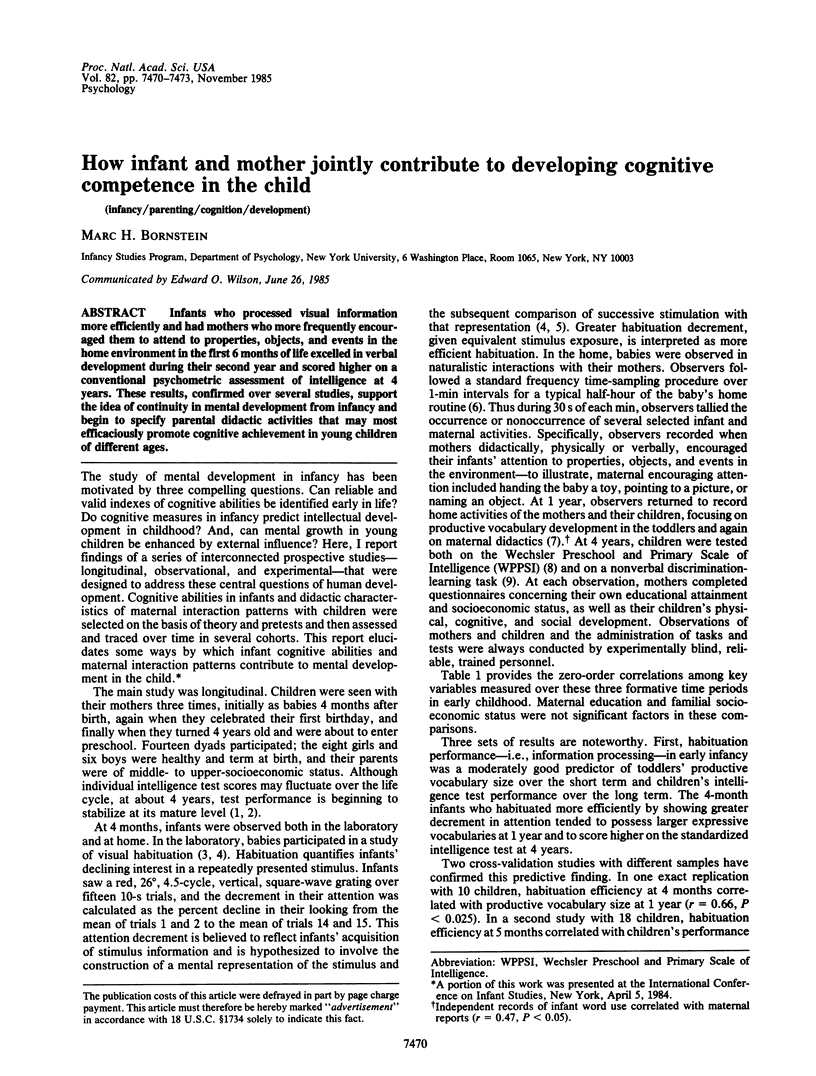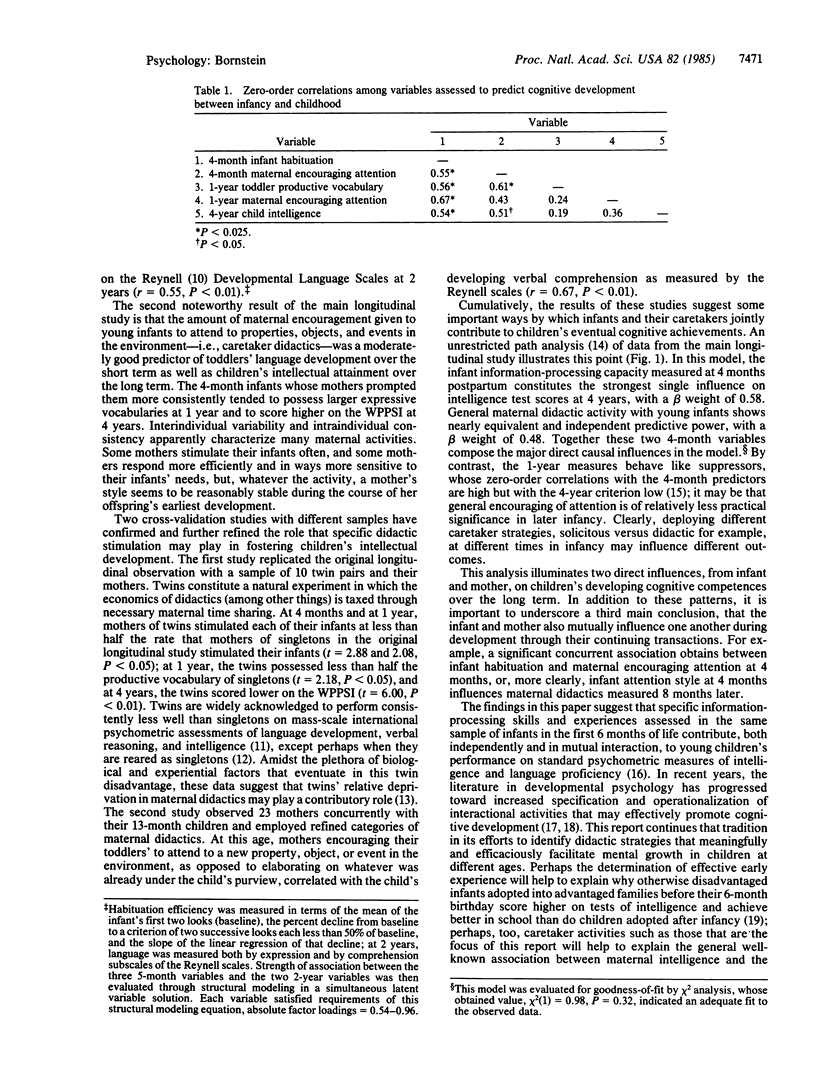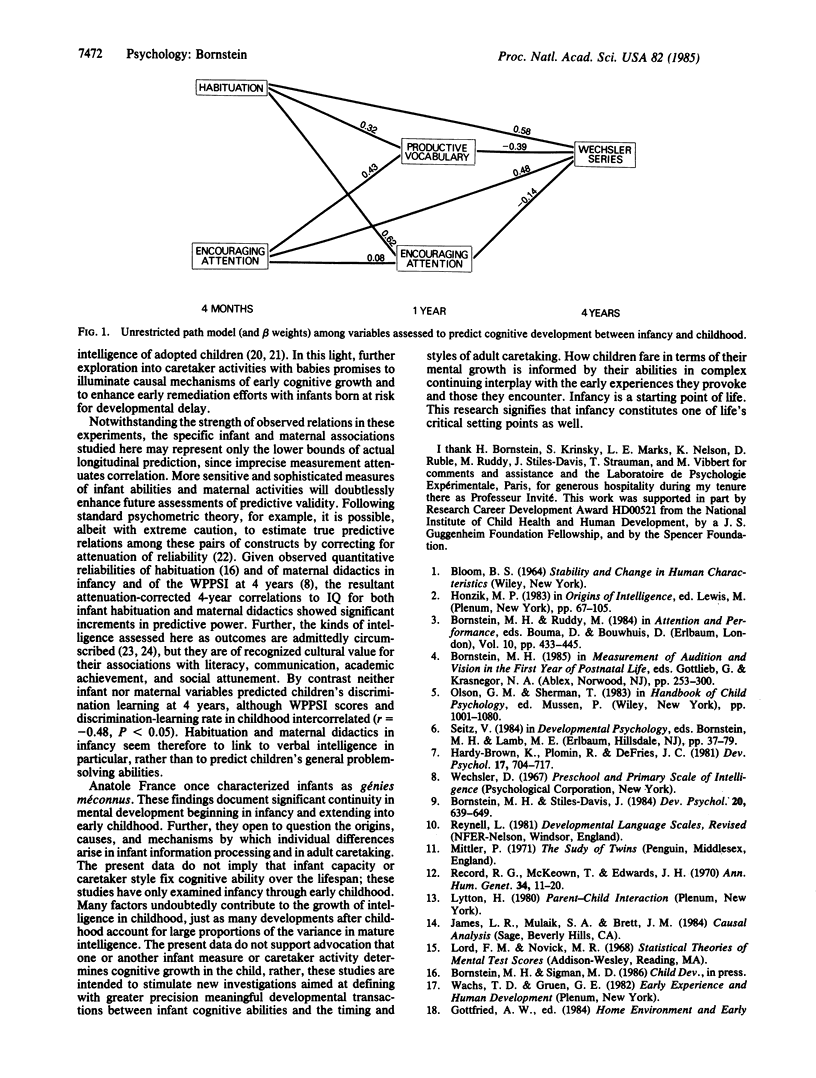Abstract
Infants who processed visual information more efficiently and had mothers who more frequently encouraged them to attend to properties, objects, and events in the home environment in the first 6 months of life excelled in verbal development during their second year and scored higher on a conventional psychometric assessment of intelligence at 4 years. These results, confirmed over several studies, support the idea of continuity in mental development from infancy and begin to specify parental didactic activities that may most efficaciously promote cognitive achievement in young children of different ages.
Full text
PDF



Selected References
These references are in PubMed. This may not be the complete list of references from this article.
- Horn J. M., Loehlin J. C., Willerman L. Intellectual resemblance among adoptive adoptive and biological relatives: the Texas adoption project. Behav Genet. 1979 May;9(3):177–201. doi: 10.1007/BF01071300. [DOI] [PubMed] [Google Scholar]
- Record R. G., McKeown T., Edwards J. H. An investigation of the difference in measured intelligence between twins and single births. Ann Hum Genet. 1970 Jul;34(1):11–20. doi: 10.1111/j.1469-1809.1970.tb00215.x. [DOI] [PubMed] [Google Scholar]
- Scarr S., Weinberg R. A. The Minnesota Adoption Studies: genetic differences and malleability. Child Dev. 1983 Apr;54(2):260–267. [PubMed] [Google Scholar]
- Schiff M., Duyme M., Dumaret A., Stewart J., Tomkiewicz S., Feingold J. Intellectual status of working-class children adopted early into upper-middle-class families. Science. 1978 Jun 30;200(4349):1503–1504. doi: 10.1126/science.663634. [DOI] [PubMed] [Google Scholar]


